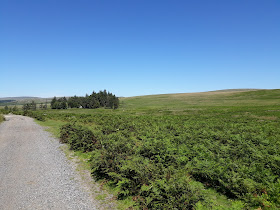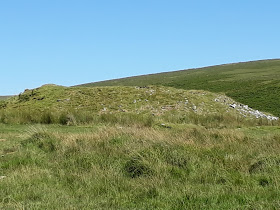It's been just over a week now since I started to compose this post only to discover that it was not going to be quite as simple as I first thought.
The creative team behind this platform, 'Blogger' that hosts 'JJ's Wargames' have been rather busy in recent months redesigning the layout of the screen that I look at when putting the blog together, so much so that I am never quite sure what I will find each time I press the 'Create a new Post' button, and long familiar ways of doing things are suddenly thrown astray by the creative whims of the people that make the changes.
This last week was slightly different in that someone in the design team had managed to create an input system that caused all type inputs to be created with a double spacing between lines which rather messed up the final appearance of a post.
Someone then discovered a convoluted solution to press the space key at the same time as pressing the return key to create a new line, that overcame this issue and kindly passed it on to the wider community of bloggers, and now I find, as I sit down to compose this post two weeks since my last, that the error has been corrected altogether and we are back to normal!
Hey-Ho, who said life was designed to make you happy - anyway on with the blog!
The end of July saw Carolyn and I celebrating our thirty-second wedding anniversary and so to enjoy the day together we decided to make the most of the hot weather with another expedition to Dartmoor to explore the prehistoric Drizzlecombe Ceremonial Complex and the scenery depicted in the Spielberg film War Horse based on Micheal Morpurgo's 1982 novel of the same name.
https://en.wikipedia.org/wiki/War_Horse_(film)
The OS Map of Dartmoor that I carry on my View Ranger App on the phone shows the route of our walk starting at the small car park, just below Gutter Tor, the first point we intended to head for and where we planned to stop for our lunch as we gazed out over the splendour of south Dartmoor towards the coast and the entrance to Plymouth.
 |
| The trail below Gutter Tor looking back to the car park |
 |
| Our walk for the day would take us over the ground ahead encompassing Gutter Mire and Drizzle Combe |
 |
| The first view of the stone row and its imposing header stones at each end |
 |
| A closer view of the stone row reveals the Giant's Basin Cairn directly behind the closer of the two largest stones. |
 |
| Meanwhile Carolyn had found a friend as she discovered an easier route across Drizzle Combe to get up to the complex |
 |
| The cairns consist of an outer and inner ring of stones in their construction, with a central pit. |
 |
| The view from the slope of Higher Hartor Tor, with the Ceremonial Complex and the courses of the River Plym (left) and Drizzle Combe (right) cutting across the valley below. |
We had planned originally to walk up to the summit of Higher Hartor Tor befor cutting across to the ruins of the Eylesbarrow Tin Mine (see map above), but with a fish and chip supper booked for picking up on our way home and over an hours drive to get back we decided to cut across to the military track just below the ruins and our walk back to the car park.
 |
| Ruins of the stamping mill of the Eylesbarrow Tin Mine |
 |
| The military track leads back across the moor providing easy walking on our last leg as we made our way back to the car looking forward to the fish and chips that evening. |
As you will see from the pictures the weather was stunning for our wedding anniversary walk and all that fresh air meant we were hungry after it.
Dartmoor is such a special place to walk and I am looking forward to sharing more of its amazing vistas and history in future visits.
http://www.dartmoorwalks.org.uk/site/drizzle1.php
http://www.dartmoorwalks.org.uk/resource/rows.php



























Congrats on your anniversary, and thank you for sharing your trek.
ReplyDeleteIt is mind boggling to consider 4000 years of human history since the site was built.
Hi irishserb and thank you.
DeleteAbsolutely,the passage of time is readily captured when gazing at these monuments now standing in the middle of nowhere but obviously significant to the people who occupied the area in the bronze age and with numerous remains of their settlements nearby indicating the thriving communities that existed back then.
JJ
What a great way to celebrate your anniversary - congratulations on 32 years. Lovely scenery and a nice planned route to make the most of it.
ReplyDeleteCheers Greg, we had a great day out in a beautiful part of the moor.
DeleteHappy anniversary, although belated. Nice post, I'm always humbled at my place in the world when I come across historical areas such as this. Thanks for sharing.
ReplyDeleteHi Adam,
DeleteThank you, I would have posted nearer the time if Blogger wasn't being messed about with and still is sadly.
The UK is rich is historical and ancient sites and sometimes its easy to take them for granted, but these places serve as a reminder that our time here is relatively short and a mere second in the grand scheme of things, and its great to enjoy a sunny day walking among them contemplating that aspect and it's a pleasure to share.
All the best
JJ